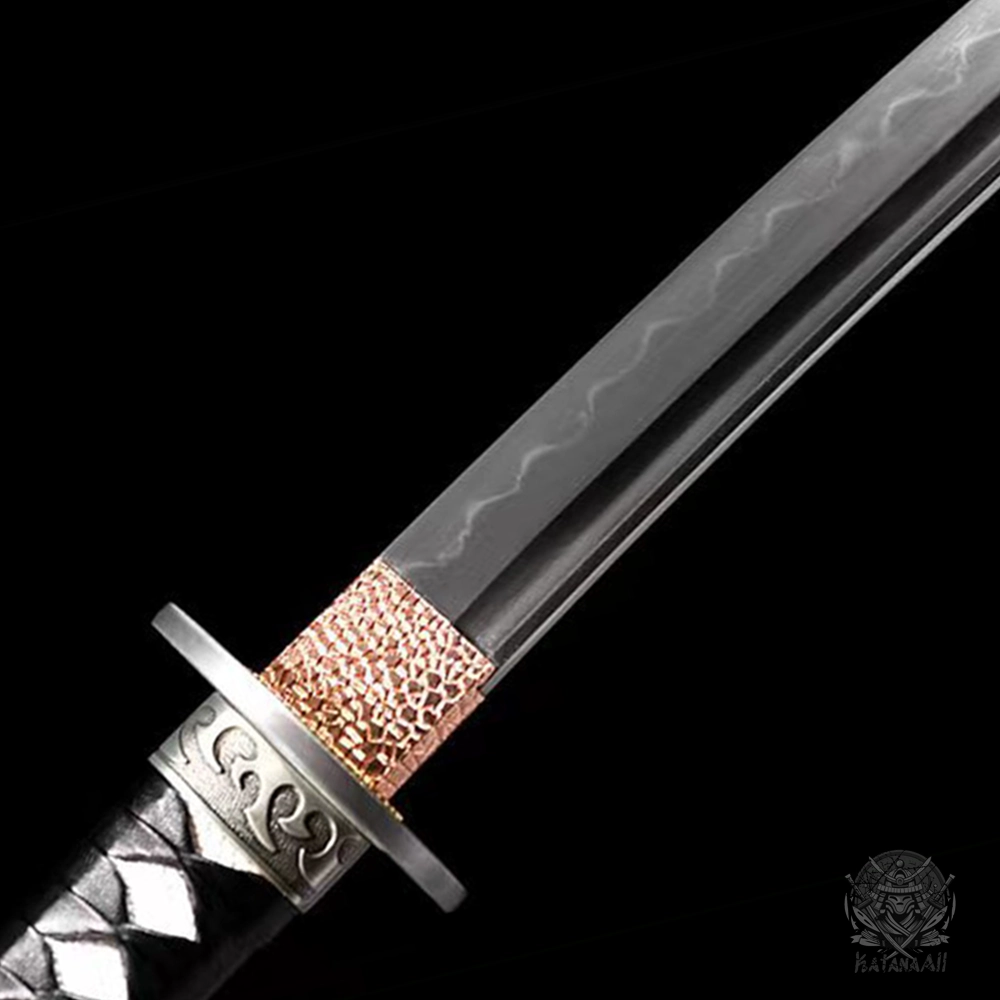
The katana, renowned for its sharpness and beauty, is a symbol of Japan’s rich cultural heritage. Its creation is an intricate process requiring exceptional craftsmanship and attention to detail. Among the many factors that determine a katana’s quality, the steel used plays a pivotal role. The importance of steel quality in katana making cannot be overstated, as it directly influences the blade’s durability, sharpness, flexibility, and overall performance.
Understanding Traditional Tamahagane Steel
Traditional katanas are made using tamahagane, a type of high-carbon steel produced in a traditional Japanese tatara furnace. Tamahagane is prized for its balanced carbon content, typically ranging from 0.5% to 1.5%, which gives the steel both hardness and flexibility.
Characteristics of Tamahagane Steel
- Purity: The meticulous refinement process removes impurities, ensuring the steel’s consistency.
- Carbon Content: The carefully controlled carbon levels strike a balance between edge retention and the ability to withstand stress without cracking.
- Layering: Tamahagane is folded multiple times during forging to homogenize the carbon content and eliminate microscopic flaws, creating a blade with uniform strength and resilience.
Modern Steel Alternatives
In contemporary katana production, smiths sometimes use modern steels such as 1095, 9260, or Damascus steel. These materials offer specific advantages while maintaining the core qualities of traditional tamahagane.
1095 High-Carbon Steel
- Advantages: Excellent edge retention and sharpness.
- Disadvantages: Higher risk of brittleness if improperly tempered.
9260 Spring Steel
- Advantages: Exceptional flexibility and resistance to bending, making it ideal for practice swords or heavy use.
- Disadvantages: Slightly less traditional in aesthetic and composition.
Damascus Steel
- Advantages: Visually stunning with unique patterns; good strength and sharpness.
- Disadvantages: May not match the purity or authenticity of tamahagane.
Key Factors Influenced by Steel Quality
1. Edge Retention and Sharpness
The blade’s ability to maintain a razor-sharp edge is directly linked to the steel’s hardness. High-carbon steels, such as tamahagane or 1095, excel in this area. However, overly hard steel can become brittle, which is why the smith’s skill in tempering is crucial.
2. Durability and Strength
The repeated folding and forging of steel remove impurities and distribute carbon evenly, ensuring the blade can withstand the stresses of combat or cutting exercises. Inferior steel with inconsistent composition may crack or break under pressure.
3. Flexibility and Shock Absorption
A katana must have enough flexibility to absorb shocks without snapping. Tamahagane achieves this balance through differential hardening, where the edge is hardened while the spine remains softer. Modern spring steels like 9260 also excel in this area, providing enhanced flexibility for heavy use.
4. Aesthetic Appeal
The quality of steel also impacts the blade’s visual characteristics. Tamahagane produces intricate hada (grain patterns) and a distinctive hamon (temper line), which are hallmarks of a masterfully crafted katana. Modern Damascus steel is celebrated for its striking wavy patterns, adding artistic value to the blade.
The Role of Differential Hardening
One of the most critical techniques in katana making is differential hardening, achieved through applying clay to the blade before quenching.
- Hardened Edge: The edge cools rapidly, becoming hard and sharp.
- Soft Spine: The spine cools slowly, retaining flexibility.
This process relies heavily on the steel’s quality. Impurities or inconsistent composition can lead to cracking during quenching, ruining the blade.
Why Steel Quality Matters for Collectors and Practitioners
For Collectors
High-quality steel enhances the katana’s value and authenticity. Collectors seek blades crafted from tamahagane or other premium steels, as these materials reflect traditional techniques and superior craftsmanship.
For Practitioners
Martial artists require blades that perform reliably under rigorous use. Poor-quality steel may chip, bend, or break during practice, posing a safety risk. Choosing a katana made from reputable steel ensures durability and longevity.
Evaluating Steel Quality in a Katana
When purchasing a katana, consider the following factors to assess steel quality:
- Material Source: Look for katanas made from tamahagane or high-grade modern steels.
- Crafting Process: Ensure the blade has been properly forged, folded, and tempered.
- Reputation of the Smith: A skilled smith can maximize the potential of high-quality steel.
- Certifications and Documentation: Authentic katanas often come with proof of material and craftsmanship.
Conclusion
The quality of steel is the foundation of a katana’s performance, durability, and beauty. From traditional tamahagane to modern high-carbon alternatives, selecting the right steel ensures the blade lives up to its legendary status. Whether you are a collector, practitioner, or enthusiast, understanding the importance of steel quality in katana making allows you to appreciate the craftsmanship and legacy of this iconic weapon. When choosing a katana, prioritize the steel to invest in a piece of history and functionality that will endure for generations.
